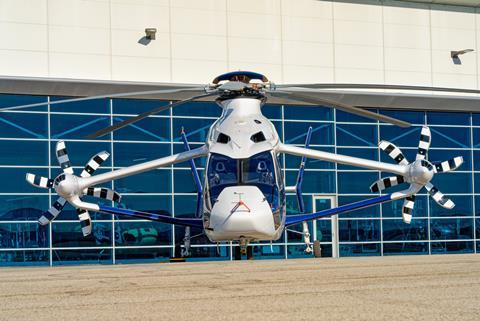Half-a-dozen companies – including traditional airframers, start-ups, and even an international consultancy – are vying for a trio of contracts to produce designs for a next-generation rotorcraft that could eventually replace thousands of helicopters currently operated by NATO members.
Earlier this year, the NATO Support and Procurement Agency (NSPA) launched a tender for the platform concept study phase of the Next Generation Rotorcraft Capability (NGRC) project it is managing on behalf of six alliance members.

In total, the NSPA received six bids by its end-April deadline, spanning a range of companies.
Candidates that had already signalled their participation include: Airbus Helicopters, plus a team over 10 subcontractors, which is working on a design based on its Racer high-speed demonstrator; Leonardo Helicopters, which, alongside partner Bell and a 14-strong team, has proposed a tiltrotor concept; and Lockheed Martin, with a design derived from Sikorsky’s X2 compound-coaxial technology.
However, there are three outsiders in the mix as well, with bids received from Lithuanian company Jetcopter, Canada-based Bornea Dynamics, and, somewhat surprisingly, Deloitte – the international accountancy and consultancy firm.
Jetcopter chief executive Don Skulski confirms the company, which also has an operation in Germany, has submitted an offer but provides no further details.
Although the company’s website shows multiple designs, including patent drawings, for tiltrotor aircraft, Skulski says its submission “isn’t a tiltrotor” but is instead a new concept.
Previous posts on Jetcopter’s site discuss innovations it hopes to bring to market, such as a tiltrotor aircraft capable of performing conventional, rather than vertical, take-offs.
In other tiltrotors such as the Bell-Boeing V-22 this is prevented by ground clearance issues due to the size of the proprotors, but Jetcopter says that by reducing the overall aircraft weight, it could cut the diameter of the component. This, coupled with a slightly upswept wing, would yield sufficient clearance for conventional take-off operations, yielding significant performance gains.
Bornea Dynamics was not immediately available to comment. A technology firm specialising in defence and security applications, the company boasts offices in Canada, the UK and USA.
Deloitte, meanwhile, declines to comment.

The NSPA praises the bids received, saying they illustrate “the dynamic competitive environment around NGRC”.
Bids will be evaluated against several criteria, but the NSPA says as the agency “and its customers prioritise performance over price”, there is an 80% weighting towards “technical and management performance”.
It intends to award contracts, worth a combined €17.1 million ($18.5 million), to up to three companies, who can each propose as many as two “integrated platform concepts”.
Contracts will be awarded in July, leading to industry submissions by early autumn next year “so that the NSPA is able to provide its recommendations to nations by the end of 2025”.
An initial pair of concept studies have already been awarded to GE Aerospace and Lockheed, to respectively examine novel powertrain solutions and an open systems architecture.
Driving the NGRC initiative are France, Germany, Greece, Italy, the Netherlands and the UK. Canada, currently an observer, is expected to be added to the main grouping in the coming weeks.
Bidders are expected to base their proposals on a concept of operations, and an initial set of capability requirements outlined by the project in 2021 but subsequently refined.
These call for a rotorcraft with a maximum take-off weight in the 10-17t range that can lift a combined maximum load of more than 4,000kg (8,820lb), including over 3,000kg externally and above 2,500kg internally. The cabin should also have room for 12-16 fully combat-equipped troops.
Optimum cruise speed should be in excess of 220kt (410km/h) but “a cruise speed of less than 180kt is not acceptable”, the requirements document adds.































